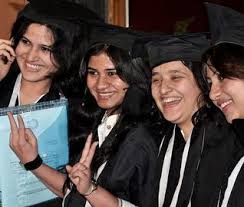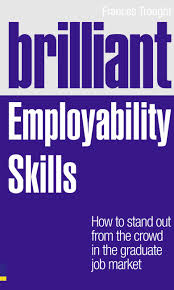About Bangalore Medical College and Research Institute
The Bangalore Medical College and Research Institute was started as a private Medical college in the year 1955 by Mysore Education Society. In the year 1957 it was handed over to the then Government of Mysore and was affiliated to Mysore University and then on to the Bangalore University. In the year 1996 it got affiliated to the Rajiv Gandhi University of Health Sciences.
Bangalore Medical College and Research Institute has Fellowship programs in Vitreo Retina, Surgical Gastroenterology, and Neurology, Cornea & External diseases of Eye, Cosmetic Dermatology, Glaucoma, Pediatric Dermatology, Pediatric Anesthesiology, Accident Trauma & Emergency Care, Community Ophthalmology and Dermato Surgery with 2 seats each. Para-medical courses are Medical lab technician, X-ray technician, Medical record technician, Health inspector, Ophthalmology, Operation Theatre Technician simultaneously being run in the Institution and also Allied science like B.Sc Medical lab technician and B.Sc Operation Theatre Technician are also running by the institution.
The College has a Central library stocked with several standard books and subscribes to about 120 journals (Foreign & Indian) each year. Bangalore Medical College and Research Institute Alumni Association has also constructed a Digital Library and State of the Art Seminar Hall. A Tele-medicine unit in collaboration with ISRO also exists at Bangalore Medical College and Research Institute making it the first Govt. Medical College to provide this facility in the state of Karnataka.
B.R. Birla School conducts classes from pre-primary up to secondary level. All at B.R. Birla School strive for all-round development of the children by nurturing the individual talents and catering to the special needs of children like dealing with stress, building self-image and overcoming fears.
B.R. Birla School believes that children attitudes and approach to life must be rooted in Indian culture and Indian values of which they are very proud. The school seeks the whole hearted co-operation of parents and considers them as partners in their mission in creating a just and humane society.
They possess:
- Smart “Technology enabled” classrooms
- Conversation classes in Language Lab
- Caring faculty selected by the BRBPS society
- Day Boarding Help Remedial Classes
- Skating, Swimming, Lawn Tennis, Gym, Volleyball and much more
- Top quality Indian & Continental meals
- Regular health check-up
Academic Dishonesty
Academic dishonesty is one of the most difficult and serious issues that educators have to deal with, and this is even more of a concern within online learning largely due to the perceived anonymity between the faculty and students.
How do you, as an online faculty member, handle all of the facets of this problem?
IAO suggests that the first step you should take is to carefully review the academic integrity policies of your university. Policies like these have been carefully composed and publicly posted for the benefit and direction of the entire learning community, so don’t neglect this helpful resource.
Types of Academic Dishonesty
IAO categorizes academic dishonesty into five distinct types:
- Cheating:
Cheating is intentionally using or attempting to use unauthorized materials, information, notes, study aids or other devices or materials in any academic exercise.
- Fabrication, Falsification, And Forgery:
Fabrication is the intentional invention and unauthorized alteration of any information or citation in an academic exercise. Falsification is a matter of altering information, while fabrication is a matter of inventing or counterfeiting information for use in any academic exercise. Forgery is defined as the imitation or counterfeiting of documents, signatures, and the like.
- Multiple Submission:
This is the submission of substantial portions of the same work (including oral reports) for credit more than once without authorization from instructors of all classes for which the student submits the work. In other words, this is when students turn in the same thing for two different assignments.
- Plagiarism:
Plagiarism is intentionally, knowingly, or carelessly presenting the work of another as one’s own (i.e., without proper acknowledgement of the source). The sole exception to the requirement of acknowledging sources is when the ideas, information, etc., are common knowledge.
- Complicity:
Complicity is intentionally or knowingly helping or attempting to help another to commit an act of academic dishonesty.
Prevention
While detection and punishment for academic dishonesty is unavoidable, teachers should focus more of their attention on the prevention of such cases in the first place. Make students clearly aware of the policies on academic integrity, student conduct, and communication. These policies should be presented to students the very day your online class opens up and shared with students in several ways. Post the policies in the syllabus, with links to the student handbook and/or university catalog where they are located, and require students to sign an academic honesty contract. Include the links in your welcome email to the students, and in your directions and discussions with students. Avoid future confusion by sharing examples of when they might run into uncertainties over what is academically dishonest.
Finally, make sure students understand that the policies of the university provide an excellent summary of the research and some additional tips, such as developing a rapport with your students. The more “humanized” the interaction becomes, the less likely students will be to cheat. Become someone your students know personally and not a faceless instructor.
You can also consider developing meaningful assessments, as students are more likely to cheat if they see an assignment as just “busy work” that the instructor will not pay much attention to evaluating. Make it clear that all of the assignments are valuable. In addition, remind students that educators use technology to uphold academic integrity through plagiarism detection software and have access to everything that happens in the LMS.
Help your students with proper citation skills as well so that they can avoid accidentally plagiarizing something. Invite tutors and other staff members from the learning center and/or library into your class to speak directly to students on how to properly do research and cite sources, what good academic research strategies are, and how to avoid plagiarism. Also consider designing courses that require an individualized approach to assignments and scaffold these so that there is a “paper trail” of each student’s work. Protect the integrity of your tests by randomizing questions/answers, rotating tests used, setting strict limits on test, and using proctored settings.
Finally, model what you expect. If you expect your students to properly document sources, do so in your own course documents.
World’s Top 10 Universities
Every student, whether online or traditional wishes to study and get education from a world class university as it plays a key role in determining the value of a degree in the job market. So below IAO presents the QS World University Rankings.
As part of the QS World University Rankings®, graduate employers worldwide were asked to name the universities they believe produce the best graduates. In addition to employer reputation, the QS World University Rankings also consider academic reputation, research citations, student-faculty ratio, and international diversity of staff and students. The survey is based on a major global survey of graduate employers (more than 27,000 in 2013) and the results provide a unique insight into the global hierarchy of universities as it stands in the eyes of those who, perhaps more than any other group, play a role in determining the value of a degree in the job market.
So, which are this year’s best universities according to employers?
10 Best Universities According to Employers 2013/14*
| University | Country | Overall Positions in QS World University Rankings 2013/14 |
| 1. University of Oxford | UK | 6 |
| 2. University of Cambridge | UK | 6 |
| 3. Harvard University | US | 2 |
| 4. London School of Economics & Political Science (LSE) | UK | 68 |
| 5. Massachusetts Institute of Technology (MIT) | US | 1 |
| 6. Stanford University | US | 7 |
| 7. Imperial College London | UK | 5 |
| 8. University of Melbourne | Australia | 31 |
| 9. University of Manchester | UK | 31 |
| 10. University of California, Berkeley | US | 25 |
Best-Known Universities Around The World
Beyond the big US and UK institutions, the employer survey allows prospective students to discover universities around the world with the strongest international reputations. And, as ever, the results of the employer reputation survey can give a significantly different picture as that provided by the overall rankings.
The University of Melbourne is Australia’s star performer according to employers, with overall top-ranked institution Australian National University also surprisingly outperformed by the University of New South Wales, Monash University and University of Sydney.
In Canada, the University of Toronto has a very slight edge on McGill University, but the two are clearly established as the country’s most internationally well-regarded institutions. The University of British Columbia and University of Waterloo are the only other Canadian institutions to be rated within the world’s 100 best universities according to employers.
Whereas Mainland China is outperformed by Hong Kong’s top institutions in the overall rankings, the tables are turned in the employer survey, with Peking University and Tsinghua University ranking third and fourth in Asia respectively. Yet both are beaten by Singapore National University, Asia’s number one university in both the overall and employer reputation tables, as well as Japan’s University of Tokyo.
Switzerland’s ETH Zurich has in recent years established itself as the world’s premier institution that doesn’t operate primarily in English, and in the QS survey employers recognize it as the number one institution in Continental Europe. The regions next best universities according to employers are fellow tech-focused institution Ecole Polytechnique ParisTech and Germany’s Technische Universität München.
The considerable advances made by leading Latin American universities in recent years have led to an increase in recognition among employers. However, it is Argentina’s Universidad de Buenos Aires, rather than the continent’s overall top-ranked institution Universidade de São Paulo (USP), that is regarded as the best source of graduate talent.
Benefits of International Education
International education and its benefits are a big topic of discussion these days at IAO and how it articulates the personal values, beliefs and goals to keep students motivated in their professional lives.
In this regard, IAO has newly identified a team vision of “Inspiring Futures”. This concept is a deeply rooted belief in the power of education, accompanied by a commitment to helping expand access to international education and all the opportunities IAO can support.
Here are 7 of our top reasons to love education and international study:
- Broader Perspectives
While any form of access to education has the potential to broaden perspectives, this power is especially obvious and potent in the context of international education. One of the key themes identified by our team members (many of whom have studied abroad and/or are currently working outside of their own country), this benefit is consistently cited by international students, academics and anyone else with an interest in the field. Even if you don’t study abroad in person, being part of an internationally diverse community provides invaluable access to multiple contexts, cultures, languages and viewpoints. It’s an opportunity to gain new perspectives on different norms and beliefs, get into the habit of questioning conventions, and practice truly respecting difference.
- Diverse Connections
A closely related reason to love education, especially when it has an international element, is the chance to establish connections with people from many different backgrounds and walks of life – while at the same time meeting those who share your own interests, passions and aspirations. Universities, particularly those with an international intake, provide a unique kind of foundation for long-lasting friendships and professional collaborations. Again, this is one of the common themes and experiences of our own team members, and also of the international students and graduates we speak to. Universities too are well aware that their internationally diverse students and alumni constitute some of their most valuable assets – many programs now highlight their international intake and lasting professional networks as key attractions.
- Develop and Achieve Your Goals
The next reason to love education relate to opportunities for personal development and achieving aspirations. This can range from gaining the training required to achieve quite specific career goals, to a much less easily pinned-down sense of all-round personal growth. While the first of these goals may be achieved through access to education in any setting, the experience of studying abroad or within an international community can provide a catalyst for accelerated personal development – not least by heightening many of the challenges involved in living independently and meeting academic expectations.
- Professional Skills
Recent years have seen plenty of debate around the extent to which universities are adequately supporting employability and how students could be better prepared for the workplace. However, it’s still generally accepted that higher education is effective in developing many of the skills, both hard and soft, that employers look for. International education is often held in particularly high esteem, providing opportunities for the experience of multiple cultures and languages which so many enterprises and economies now need and value.
- Equal Opportunities
Another most common cited reasons to love education is that it has the power to support equal opportunities. Regardless of race, age, gender, financial background or other factor, access to education enables every person to grow and develop, opening up all kinds of new opportunities and experience.
- Innovation
Education is an interactive process, in which teaching and learning feed into and off one another, and the idea of student-centered learning is in various stages of adoption across the world. Bringing together minds from diverse backgrounds, international education carries even more potential for stimulating an interactive and innovative approach, whether at the level of large-scale research ventures, or within an undergraduate-level classroom.
- Benefit To The Society
The final reason to love education is that it benefits not just the individuals who participate, but entire societies and economies. This was another of the key themes identified by our team – access to education not only transforms individual lives, but also has much wider-reaching collective benefits. Again, this has multiple facets, ranging from the research which underlies improvements in healthcare or innovations in information-sharing technology, to providing sufficient numbers of specialists to meet labor market demands. At the less tangible end of the spectrum, international education has the potential to strengthen relationships between economies and cultures, promoting better understanding and partnerships. In effect, international education has the capacity to embody all the most positive aspects of globalization, promoting equal opportunities, mutual respect, exchange of ideas, and effective collaboration to bring about positive changes for both individuals and communities.
Role of Women In Management Education
The root of women’s lack of participation in business is firmly planted in image—the aggressive, hierarchical image that business seems to convey to women. A lack of successful role models is a top factor in that negative message. This was observed by IAO.
IAO also noticed that if the young girls don’t see proper role models then they may not even give a business career a second thought. It was discussed that the more we make young girls aware of careers in business, the more we’ll see women in those careers. Online universities and institutes need to break the myth that girls can’t add, subtract, and divide as well as men can. And they should create a marketing strategy that tells women about careers in business.
A few case studies were also presented that are too heavily centered on male experience. Eighty to 90 percent of protagonists are male. When there is a female protagonist, she’s usually in trouble. That’s discouraging, and it’s something that needs to change. Unfortunately, the role models that are available can reinforce the idea that business and family are mutually exclusive terms.
New, controversial research in the book Creating a Life: Professional Women and the Quest for Children exacerbates this perception. Author Sylvia Ann Hewlett found that many successful women in business planned to have children; in their pursuit of success, they just “forgot,” she writes. As a result, some women “feel as if they’ve been robbed” of the chance to start a family. Some have criticized the book’s findings, but its message to women is clear: You can have children or a career in business, not both.
On top of that, Time recently published a list of women who resigned from high-powered positions to be with their families: Karen Hughes stepped down from her post as aide to George Bush to spend more time with her family in Texas; Jane Swift dropped out of the Massachusetts gubernatorial race soon after giving birth to twins; Candace Olsen, CEO of the Web site iVillage, resigned to take care of her two children. In the face of such press, institutes may have their work cut out for them.
Though IAO has noted that more corporations are adding family-friendly incentives such as flex-time and onsite day-care to their perks, but they are not yet the norm. IAO suggests that work-family programs need to be strengthened. If a woman wants to work part-time for a few years, she should not worry about getting bumped off the track to successful positions. She should not be penalized.
It will take initiatives on many different fronts not only to cultivate more role models, but to make business a more prominent and palatable career option for women. The problem as it manifests at the MBA level is only the tip of the iceberg, believe women’s groups. IAO along with many corporations, business schools, and organizations is encouraging positive role models in the media and business case studies; they’re also sponsoring programs at high schools and working to change the corporate mind-set that women must put their careers first, or risk being left behind. They maintain that only by focusing on the pipeline at all levels—middle school, high school, college, graduate school, and the corporate world— can online institutes expect to see an increase in the number of women in their ranks.
Ethics In Education
More than 80 percent of prospective online students feel that academic programs of today need to include a greater emphasis on ethics. This is found out in a recent online survey conducted by IAO, world top accreditation agency.
The questionnaire consisted of three questions only and was administered to more than 1,200 prospective online graduate students who indicated an interest in business and management degrees while researching programs over the internet.
The survey also revealed that, in the wake of the Enron and World Com scandals, more than one-third of respondents are reconsidering their educational focus, while others are rethinking their career choices.
When asked, “Are you likely to seek a job working for corporate America after the recent companies scandals?” more than 15 percent said they were “less likely,” while 20 percent were “more likely.”
IAO found out that there appears to be a growing disenchantment with corporate America among prospective graduate online students. However, whether this trend continues remains to be seen.
Employability Skills Universities Should Teach
What do employers expect a graduate to be able to do? Do they walk into work on day one and fit straight in, or are they still trainees despite their many years of education?
This question is growing in importance around the world as employment markets are tightening.
So how are universities responding to demand for degrees that better prepare students for future employment? IAO investigates.
Return On Investment
Students make a large personal and financial commitment to their education and expect a high return on both. Given that higher online education is already a big cost, the need to work for free even after leaving university only makes things even more expensive for students. It also reduces the pool of labor available to employers to those from prosperous backgrounds and causes political arguments about excluding the rest. Master’s degrees are one increasingly popular solution to the poor employment prospects of bachelors-level graduates. Employers like them because they produce specialists who can be useful quickly. For the student, they offer better employment prospects and, according to a wealth of studies from around the world, higher lifetime earnings even than people with a PhD. And universities enjoy the fees that come with the master’s degree boom.
Teaching Employability
The universities and especially online universities should take steps to make their graduates more employable. IAO suggests that they should teach students how to get a job (dress, interview technique, what makes a good resume). And more importantly, they should help people understand how to operate once they have joined an organization. There are modules on being an effective colleague, managing people and getting things done. Employers often complain that students do not know how to use their academic knowledge in the workplace.
Keys To Success
A few online universities across the world involve employers in their courses so their graduates tend to be older and more mature. This proves that adding workplace skills to academic study may benefit students, but it also has advantages for universities. The IAO polls employers about their favorite universities to recruit from. Being in touch with employers is bound to enhance the profile of a university with employers and make them more likely to recruit there. In addition, many national ranking systems use some measure of employment success in their calculations.
Applicable To All Subjects
There are plenty of degrees in professional topics such as medicine, law and engineering where standards are set by the profession and where work placements are essential. But it would be a big step to make work experience a compulsory part of a degree.
If relations with employers are important to recruiters and students, they ought to be reflected in rankings criteria. However, employers and employment practices vary widely between countries, so it would be hard to establish a common way of assessing them. In addition, universities with more science, technology and medicine in their subject mix will inevitably show up well on these measures, and we know that the use of citations data already favors these universities in ranking systems.
The solution may be to avoid adding this measure to existing university rankings, and instead to develop specific rankings that cover this aspect of university performance, much as IAO is now developing rankings for individual subjects. These include recruiter feedback when possible.
Changes Affecting Online Education Today
Traditional online universities and institutes are facing an incredibly competitive landscape in a continually changing technological environment.
First, the percentage of total degrees awarded by traditional universities continues to decline as many more accredited institutes award degrees. Second, we’ve gone from a situation where a majority of MBA students are full-time traditional students taking classes during the day, to a situation where only one-quarter of them are two-year, full-time MBA students. Third, we’re seeing more and more students traveling between the U.S. and abroad, in both directions. Students today look at the world of education as a truly global set of options. The same is true of the market for faculty—25 percent of faculty in U.S. schools are international, and 42 percent of faculty globally are not from their country of residence. We need to be mindful of all these factors that affect online education today, and this is why IAO needs to respond proactively to preserve the unique role we play in advancing educational quality and practices.
IAO is an enabler and a driver of change. We act as a driver through accreditation. We act as an enabler by providing schools with information resources so they can make the right choices. We might provide statistics on the demand for graduates in various parts of the world so online universities and institutes can target their recruitment and placement activities toward those niches in the global environment. With IAO’s help, online institutes can become much more proactive in developing strategies to deliver their educational services and research services around what’s relevant, in demand, and reflective of the best scholarship.
IAO can also play an important role by showcasing best practices in a variety of areas, such as alliances between online education providers. What works and what doesn’t? How can technology be an enabler of education delivery? How can schools develop partnerships with the corporate world, and how will that drive curriculum development?
IAO, as a global entity, is the most natural organization for being a permanent agitator for change. Our commission members identify the key issues that need to be addressed today and then develop a more permanent infrastructure that will always seek change. IAO responds to the critical issues that are affecting our environment—fragmentation, globalization, and the need to allocate financial and human resources properly. We need also to leverage educational practices of institutions and universities and we have to continue to be seen as the dominant providers of business knowledge and education products.
IAO Events Offers Unique Learning Opportunities for All
Who should attend the IAO Events? Anyone who is interested about program assessment and quality assurance in education!
IAO Events include conferences, seminars and workshops. The events are an excellent value no matter where you are on your assessment and IAO accreditation journey – just starting out, in the middle of the process and looking to optimize, or well-traveled and in need of a refresher.
As IAO’s Fully Accredited Institute, you can promote yourself at IAO’s educational events and seminars by participating in them. IAO will also regularly send its publications to your institute to keep you updated on educational practices you can adopt to enhance your institute’s educational standards.
IAO’s events also provides your staff members a professional development opportunity by participating in them. It will also encourage exchange of information, technology and resources on quality assurance standards and good educational practices internationally.
IAOs events explore contemporary issues, professional ethics, and life-long learning. They provide frequent networking breaks to engage with subject experts and your colleagues from around the world. They also have interactive town halls when commission leaders tackle your toughest accreditation questions. You can also get assessment and Self-Study Report development.
Apply for IAO’s accreditation or you will risk missing out on all of these events, resources, and much more!
Effect of Mid-Term Elections on International Accreditation
 The midterm elections and change to Republican leadership in the U.S. Senate have proposed a challenge for international accreditation and accreditation agencies like IAO in terms of how to go forward. Will it call for reauthorization of the Higher Education Act any time in the next few years? If so, what will it look like? If not, what will this mean for the academic community?
The midterm elections and change to Republican leadership in the U.S. Senate have proposed a challenge for international accreditation and accreditation agencies like IAO in terms of how to go forward. Will it call for reauthorization of the Higher Education Act any time in the next few years? If so, what will it look like? If not, what will this mean for the academic community?
According to the democratic party, regulation of higher education and accreditation has been viewed as essential, with the government spending about $175 billion a year on student aid and with rising tuition, rising student debt and lower-than-desirable graduation rates.
At numerous occasions, the chairman of the Senate Health, Education, Labor and Pensions Committee, has said that accreditation agencies were not doing enough with quality control and accountability, especially when it comes to “bad actors” or substandard institutions. His June 2014 discussion draft for reauthorization included a significant expansion of transparency in accreditation. Even as some Senate members expressed concern about President Barack Obama’s proposed College Ratings System, some still supported creating performance indicators for colleges and universities, including student learning outcomes a task that, to date, has been left to the academic community. Various members of the Senate were calling for more innovation in higher education and challenging international accreditation to provide some leadership here.
This urgency that has surrounded the national quality discussion for the past several years will not diminish. However, a Republican-led Senate means that accreditation will not be on a path to no additional regulation at all. These guys are calling for accreditation for innovation, change and a fresh look like the IAO does.
The issues debated earlier — quality control, accountability, innovation — will be on the table always. It is the approach that is likely to vary. The senator, a former U.S. Secretary of Education and university president, has said on many occasions that he wants to deregulate to address the quality and accountability challenges for higher education and accreditation. He has talked about not making funds available for implementation of the College Ratings System. He has defended the peer review process at the heart of accreditation and talked about the importance of institutional autonomy to future progress on innovation, with colleges and universities, not government, in the lead. He wants to streamline the federal student aid application system.








